Strategies to Maximize Cost Savings with AWS EBS 2025 (Updated)

Introduction
Managing Amazon EBS costs doesn’t have to be a headache. Whether you’re just starting out with AWS or you’re architecting cloud solutions, understanding EBS volume pricing and cost optimization is crucial. In this guide, we’ll:
- Demystify how EBS billing works
- Share practical tips to minimize your EBS spend
- Outline proven strategies for AWS EBS cost optimization
By the end, you’ll have clear, actionable next steps to right-size volumes, automate cleanup, and keep your storage bill in check. Let’s get started!
For more details on EBS pricing—from per-GB rates and IOPS fees to snapshot charges—see our “Understanding Amazon EBS Pricing: A Complete Guid” blog post.
What is Amazon EBS ?
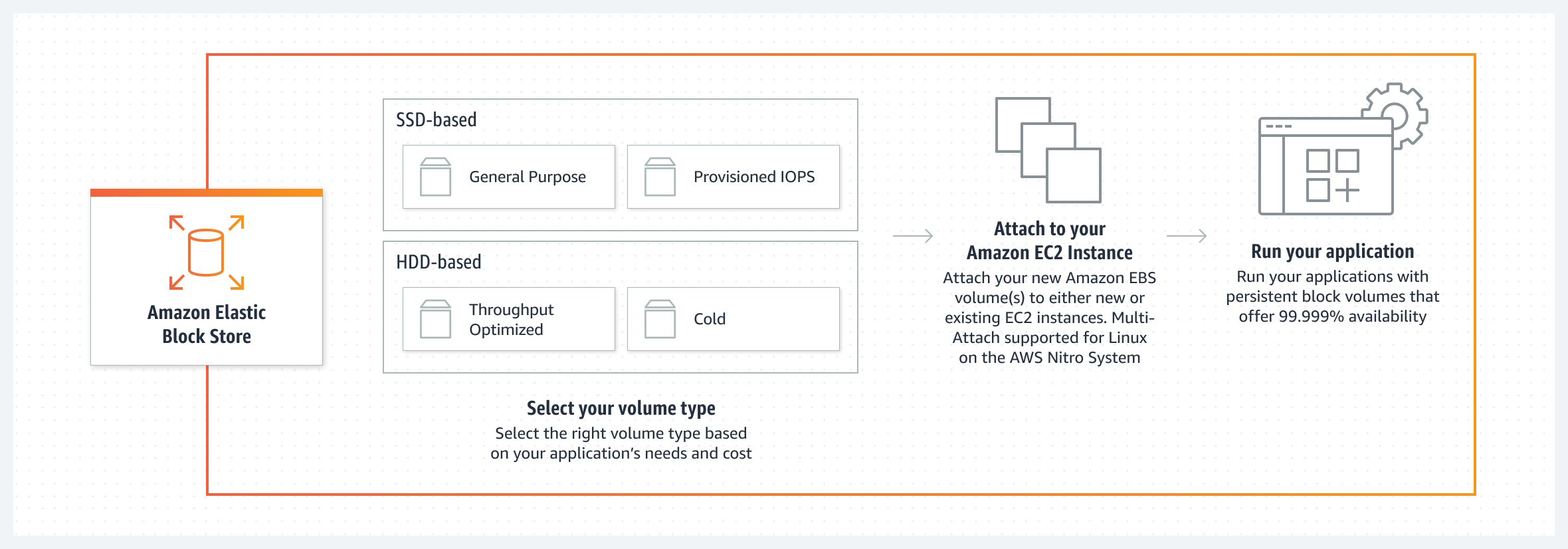
Amazon Elastic Block Store (EBS) delivers persistent, block-level storage for your EC2 instances—think of it as a virtual hard drive in the cloud that outlives any single VM. Unlike instance store volumes, EBS volumes remain intact even after you stop or terminate an instance, ensuring your data is always available. However, this durability comes with cost considerations: you pay for provisioned capacity (GB-months), IOPS or throughput when applicable, and snapshot storage.
EBS volume types fall into two broad categories, each optimized for different workloads—and each carrying its own pricing model:
SSD-Backed Volumes
Ideal for low-latency, transactional workloads that require consistent IOPS:
- General Purpose SSD (gp3 / gp2):
- Use cases: Boot volumes, small-to-medium databases, development and test environments
- Performance:
- gp3: Up to 16,000 IOPS and 1,000 MB/s throughput at a base cost of ~$0.08/GB-month
- gp2: Baseline IOPS equal to size (GB) with bursting, at ~$0.10/GB-month
- Cost impact: You pay per GB and—for gp3—only for the IOPS or throughput you provision beyond the free baseline. Migrating gp2 → gp3 is often a quick win for cost savings and better performance control.
- Provisioned IOPS SSD (io2 / io2 Block Express):
- Use cases: Mission-critical databases, high-performance applications
- Performance: Up to 256,000 IOPS and 4,000 MB/s throughput (Block Express)
- Cost impact: Higher per-GB and per-IOPS rates; only recommended when your workload truly demands sub-millisecond latency at scale.
HDD-Backed Volumes
Optimized for large, sequential workloads where throughput matters more than IOPS:
- Throughput Optimized HDD (st1):
- Use cases: Big data, data warehouses, log processing
- Performance: Up to 500 MB/s throughput
- Cost impact: ~$0.045/GB-month; economical for frequently accessed, large-volume data.
- Cold HDD (sc1):
- Use cases: Infrequently accessed data, archival backups
- Performance: Up to 250 MB/s throughput
- Cost impact: ~$0.015/GB-month; lowest-cost option for “cold” storage.
Why Volume Choice Matters for Cost Optimization
Each volume type carries different rate structures—per-GB storage fees, IOPS or throughput charges, and snapshot costs. Choosing the right mix based on your actual workload patterns ensures you’re not over-provisioning performance you don’t need (or under-provisioning and hitting expensive performance fixes down the line). In the following sections, we’ll show you how to match volume types to workloads, right-size configurations with Elastic Volumes, and automate clean-up to keep your EBS bill lean.
Amazon EBS Pricing Model Explained
To plan and optimize your EBS spending, it helps to understand the separate cost components that make up your monthly bill:
- Volume Storage
- You’re billed per GB-month for every provisioned volume, regardless of usage. For example, a 100 GB gp3 volume costs roughly $8/month (100 GB × $0.08/GB-month). Remember to delete or shrink volumes you no longer need to stop the clock on storage fees.
- Snapshot Storage & Transfers
- Incremental Snapshots: Backups are incremental—only the blocks that have changed are stored—so your snapshot size is often much smaller than the volume.
- Snapshot Storage Fees: Charged per GB-month of data stored in Amazon S3.
- Cross-Region Copy: When you copy a snapshot between Regions, you pay for the data transferred and then standard EBS snapshot storage rates in the destination Region.
- Fast Snapshot Restore (FSR)
- If you enable FSR—so new EBS volumes from a snapshot are instantly ready—you pay for Date Services Unit-Hours (DSU-hours). DSUs are metered by the minute (with a one-hour minimum) and cost around $0.75 per DSU-hour per AZ in us-east-1.
- EBS Direct APIs for SnapshotsUse these APIs to efficiently read and manage snapshot data, billed as follows:
- ListChangedBlocks & ListSnapshotBlocks: Charged per API request.
- GetSnapshotBlock & PutSnapshotBlock: Charged per 512 KiB SnapshotAPIUnit.
- Data Transfer Costs
- Inbound Data: Free (data uploaded into AWS).
- Outbound Data: Charged per GB on a tiered scale; inter-AZ and inter-Region transfers incur additional EC2 data transfer fees.
Pro Tip: New AWS accounts qualify for the Free Tier—30 GB of EBS storage, 2 million I/Os, and 1 GB of snapshot storage at no charge for 12 months. Use this to experiment with EBS at minimal cost.
Identify Unused EBS Volumes
Every month, you pay for every gigabyte you provision—even if a volume isn’t in use. Unattached (or “orphaned”) EBS volumes often occur when an EC2 instance is terminated without enabling the Delete on Termination flag. Those forgotten volumes continue accruing charges until you remove them, so regular housekeeping is essential.
How to find orphaned volumes:
- Sign into the AWS Console and choose the correct Region.
- Go to EC2 → Elastic Block Store → Volumes.
- Filter by State = available (volumes not attached to any instance) or State = error.
- Review the list—each “available” volume is unattached and potentially costing you money.
Pro Tip: You can also run aws ec2 describe-volumes --filters Name=status,Values=available in the AWS CLI to list all unattached volumes programmatically.

When you attempt to delete an instance that still has attached volumes, AWS will warn you if any non-root volumes aren’t set to delete automatically. For example:
Warning:If instance has attached EBS volumes that are not configured to be deleted on termination. These volumes will remain available and incur charges after the instance is terminated.
Take a moment to either delete or snapshot—and then delete—any orphaned volumes. A quick monthly audit like this can save you significant storage costs over time.
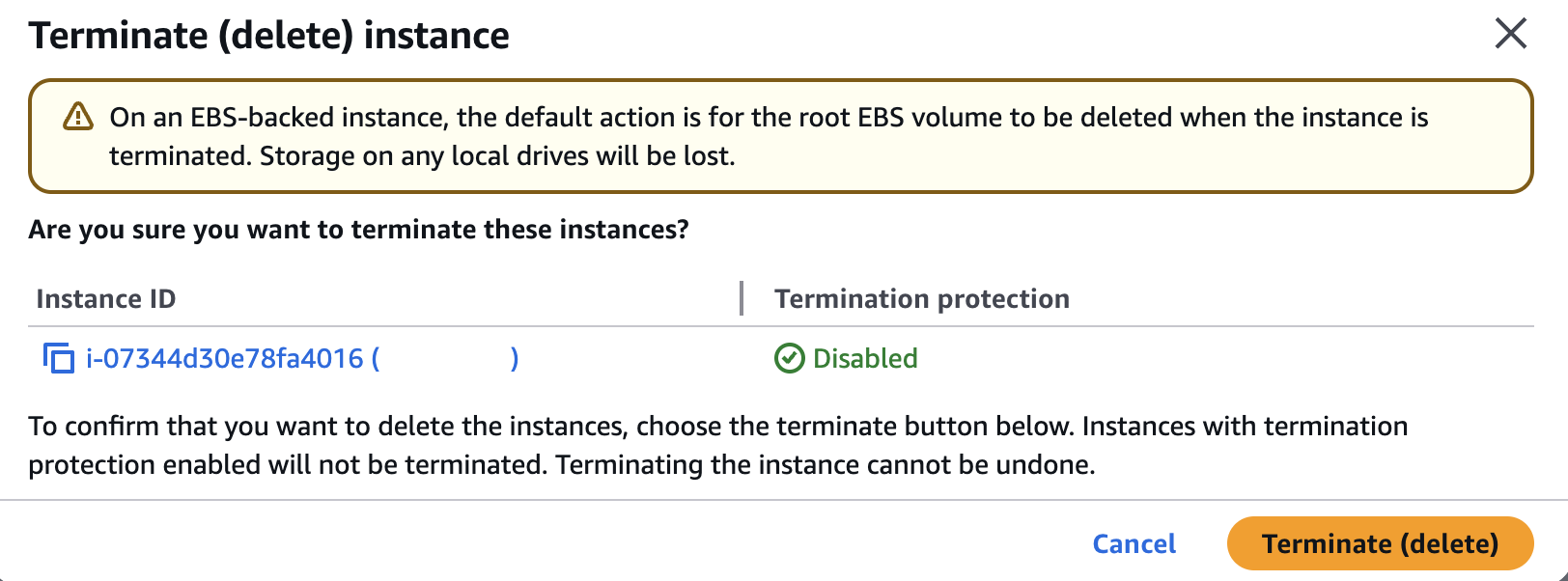
Understanding the Default Behavior of 'Delete on Termination' in EC2 Instances
When you launch an EC2 instance, each attached EBS volume has a Delete on Termination flag that controls whether AWS automatically removes the volume when the instance is terminated. By default:
- Root volume: Delete on Termination = True (root volumes are deleted by default)
- Additional volumes: Delete on Termination = False (non-root volumes persist unless you explicitly delete them)
Why It Matters for Cost and Data Safety
- Automatic cleanup: Leaving Delete on Termination enabled for temporary volumes prevents orphaned disks—and unexpected monthly charges—if you forget to delete them later.
- Data preservation: Disabling deletion on your root volume lets you preserve data after an instance is terminated, but you must manage cleanup yourself to avoid surprise costs.
How to Configure “Delete on Termination”
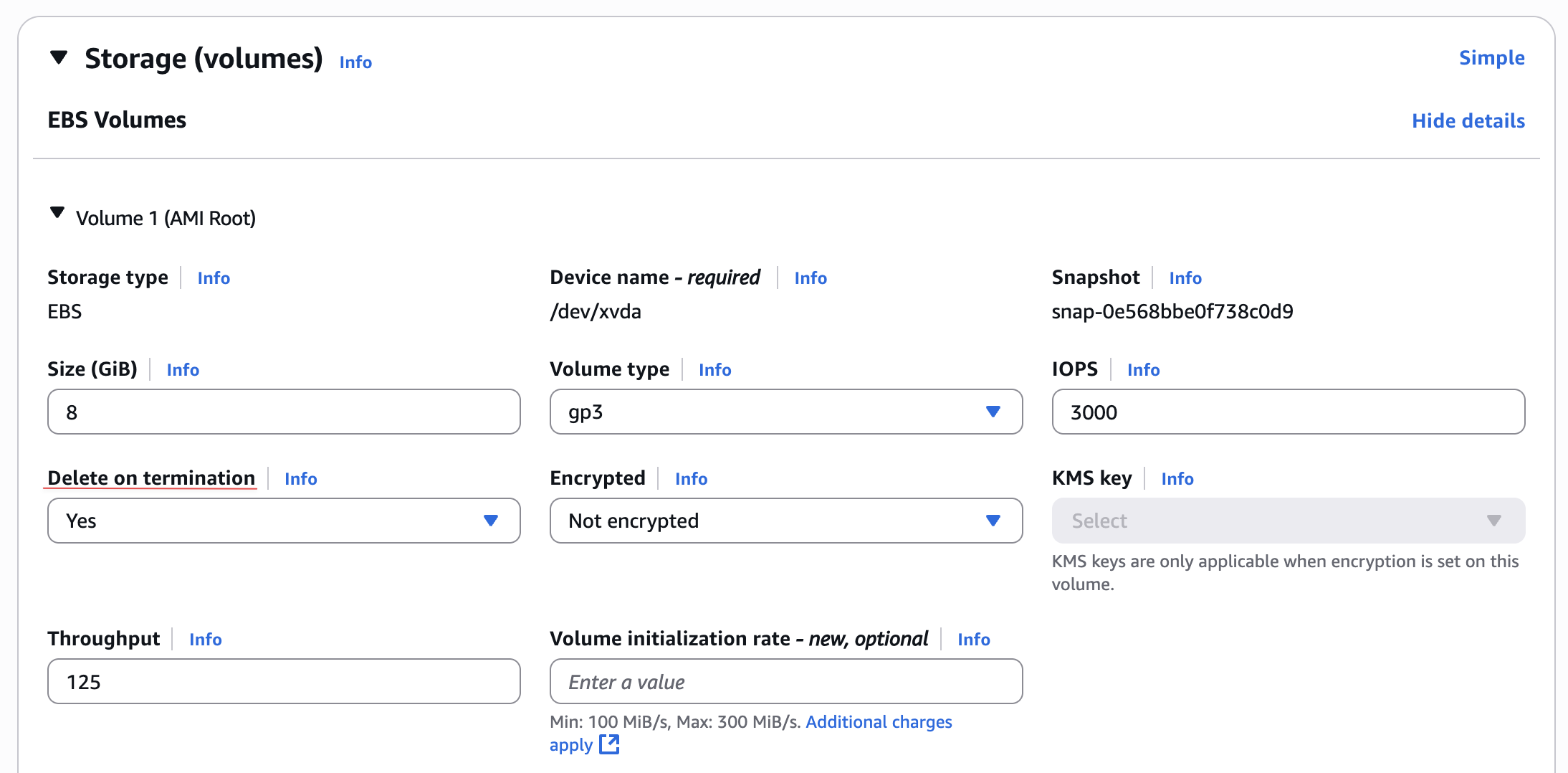
- During Instance Launch (Console):
- On the Configure Storage step, click the pencil icon next to each volume.
- Toggle Delete on Termination on or off as needed.
- After Launch (CLI or PowerShell):

- Use the AWS CLI’s modify-instance-attribute command:
- For PowerShell, refer to the AWS Tools documentation under “Preserve volumes on termination.”
Pro Tip:— Enable automatic deletion for scratch or test volumes you don’t need to keep.— Disable deletion for any volume with critical data, but remember to clean it up manually when it’s no longer needed.
By setting the correct Delete on Termination behavior up front, you ensure you only pay for the storage you actually use—and you avoid “zombie” volumes that quietly rack up costs.
Transitioning from gp2 to gp3 for Maximum Savings
.png)
Migrating your existing gp2 volumes to gp3 is one of the easiest, highest-impact cost optimizations you can make. Here’s why:
- Up to 20% lower storage cost
- In US East (N. Virginia), gp2 charges ≈ $0.10 per GB-month versus gp3 at ≈ $0.08 per GB-month—so every 1 TB volume you migrate saves you about $20 each month.
- Decoupled performance and capacity
- With gp2, your baseline IOPS grows linearly with volume size (3 IOPS/GB). If you need more IOPS, you must upsell to a larger disk—even if you don’t need the extra storage. gp3 lets you provision up to 16,000 IOPS and 1,000 MB/s throughput independently of capacity—at roughly one-sixth the incremental IOPS cost of gp2.
- Predictable performance
- gp3 guarantees 3,000 baseline IOPS and 125 MB/s throughput out of the box. For workloads that occasionally spike, you only pay for the additional IOPS or throughput you choose to provision.
By simply converting gp2 volumes to gp3—without downtime—you can achieve up to 20% savings and gain precise control over performance.
It's a smart move to create a snapshot of any volume with important data before making changes. This way, if anything goes wrong, you can easily revert back to the original state.
How to migrate a volume to gp3
- AWS Console
- Navigate to EC2 → Elastic Block Store → Volumes.
- Select the gp2 volume, then choose Actions → Modify Volume.
- Change Volume Type to gp3, adjust IOPS/throughput if needed, and click Modify.
- Monitor the progress in Volume Status, which shows “optimizing” until complete.
- AWS CLI
To alter a gp2 volume to gp3 with the AWS CLI, utilise the aws ec2 modify- command. Let's say your volume ID is vol-7522349123591234, your command would look like this:

You can monitor the modification process through the Console, CLI, or CloudWatch Events console. However, we will focus on monitoring changes using the Console option. If you are interested in alternative methods, please refer to the following documentation for more information.
- First, navigate to the Amazon EC2 console.
- Once there, in the navigational menu, select Volumes.
- Now, click on the desired volume.
- For volume information, look at the Volume state column or the Volume state field in the Details tab. Here, you'll find data organized as
Volume state-Modification state(Modification progress%). The accompanying image illustrates both the volume and volume modification states.

Reduce EBS Costs with AWS Compute Optimizer
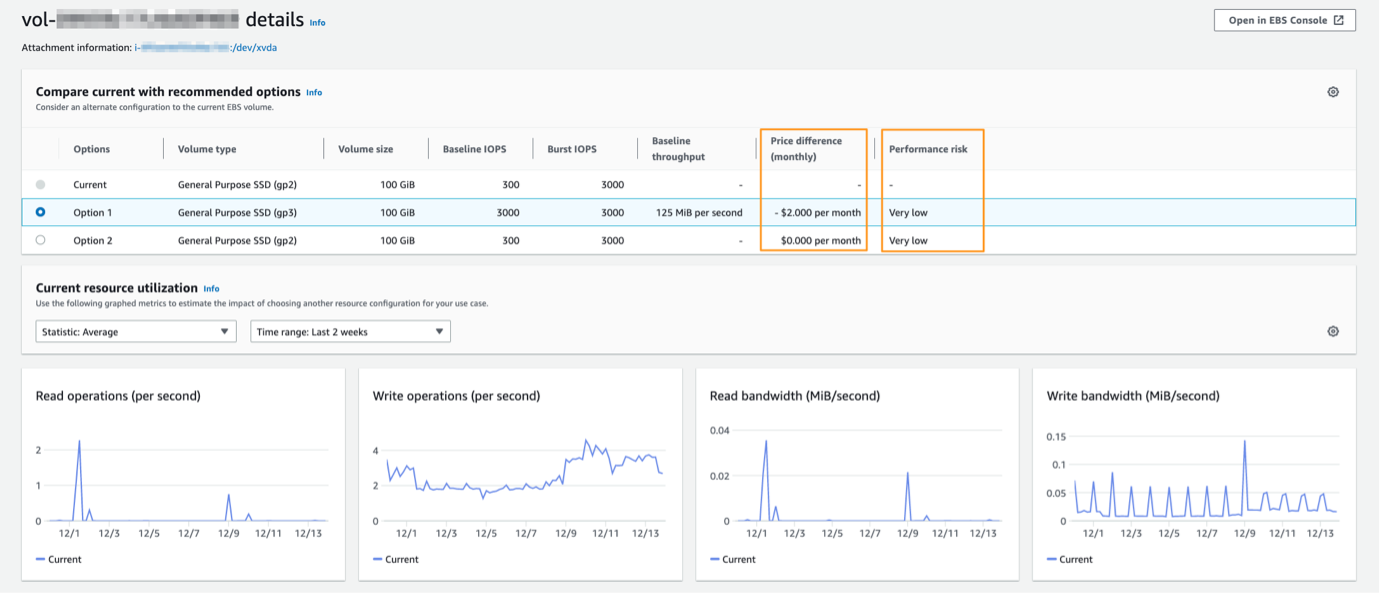
AWS Compute Optimizer is a powerful, automated service that analyzes your AWS resource usage—drawing on up to 14 days of CloudWatch metrics (or up to three months if you enable extended metrics)—and delivers actionable recommendations to right-size your EBS volumes. Here’s how you can leverage it to cut your Amazon EBS costs:
- Automatically Right-Size Volumes
- Compute Optimizer reviews volume metrics like throughput, IOPS, and burst balance.
- It flags volumes that are under-utilized (wasting provisioned storage) or over-utilized (risking performance bottlenecks).
- You get clear suggestions—for example, “reduce this gp3 volume from 1 TB to 500 GB,” or “decrease IOPS from 10,000 to 3,000”—so you pay only for what you truly need.
- Optimize IOPS and Throughput Settings
- Beyond size, Compute Optimizer recommends the ideal IOPS and throughput settings for gp3 and io2 volumes.
- By decoupling capacity from performance on gp3, you can dial in exactly the right IOPS/MB-per-second mix—often at a fraction of the cost of gp2.
- Estimate Savings for gp2 → gp3 Migrations
- If you still have gp2 volumes, Compute Optimizer quantifies the monthly cost savings of migrating to gp3.
- For organizations with hundreds of volumes, you can quickly prioritize which migrations yield the biggest impact on your AWS bill.
- Project Monthly Savings
- Recommendations include both the CurrentMonthlyPrice and RecommendationOptionsMonthlyPrice, so you can see exactly how much you’ll save each month by adopting the suggested configuration.
- Export and Automate Analysis
- Export recommendations in bulk to an S3 bucket as CSV.
- Compare prices programmatically or import into your FinOps tool to automate cost-optimization workflows (e.g., schedule “modify-volume” API calls for non-peak hours).
For a deeper walkthrough of Compute Optimizer’s features and setup, check out our AWS Compute Optimizer Deep Dive blog post.
Reducing AWS EBS Costs with Smart Volume Choices
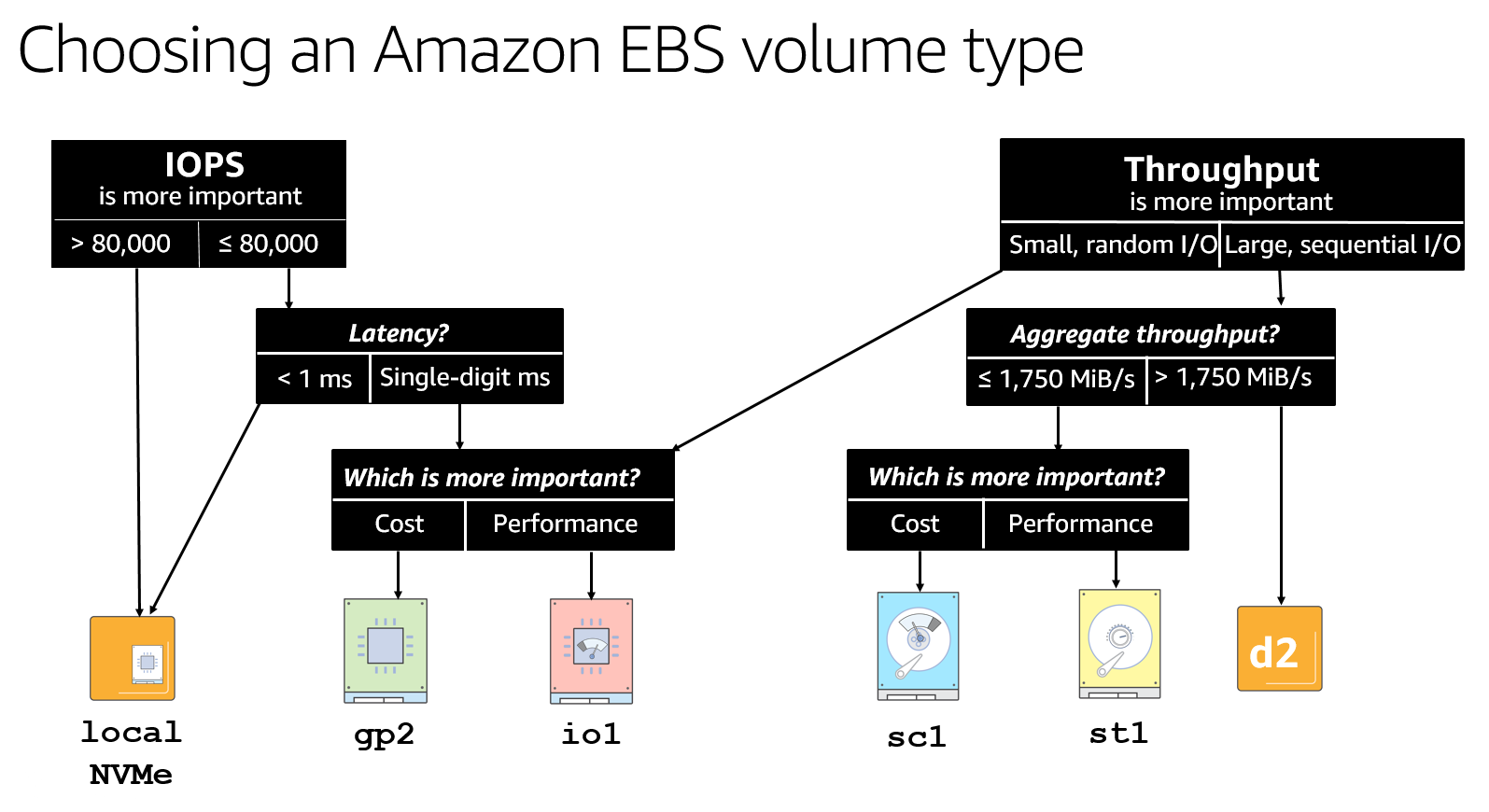
Amazon EBS offers four primary volume types—each designed for distinct performance profiles and cost structures. Picking the optimal type for your workload is a cornerstone of EBS cost optimization and ensures you’re not over-paying for capabilities you don’t need.
1. General Purpose SSD (gp3)
- Strengths: Balanced IOPS and throughput, predictable baseline performance
- Ideal for: Boot/root volumes, development and test environments, small to medium databases
- Price point: ~$0.08 /GB-month
Example Scenario: Startu Development Environment
A lean startup building a new web app needs reliable SSD performance without breaking the bank. gp3 delivers up to 3,000 baseline IOPS and 125 MB/s throughput—more than enough for variable dev/test workloads—while keeping storage costs at $0.08 /GB-month.
2. Provisioned IOPS SSD (io2)
- Strengths: Ultra-low latency, high durability (99.999%), consistent IOPS at scale
- Ideal for: Mission-critical relational or NoSQL databases, high-performance applications
- Price point: ~$0.125 /GB-month + $0.065 /IOPS-month (tiers apply)
Example Scenario: Financial High-Frequency Trading
A financial services firm runs a trading platform that demands thousands of IOPS with single-digit millisecond latency. io2’s ability to provision up to 64,000 IOPS independently of capacity ensures the database never becomes a bottleneck—and the tiered IOPS pricing means they only pay for what they use.
3. Throughput Optimized HDD (st1)
- Strengths: High sequential throughput, low cost per GB
- Ideal for: Big data analytics, data warehouses, log and stream processing
- Price point: ~$0.045 /GB-month
Example Scenario: Media Processing Pipeline
A video-editing company ingests and processes massive footage files. They need high sustained throughput but don’t require SSD-level IOPS. st1 provides up to 500 MB/s of sequential throughput at nearly half the cost of gp3 ($0.045 /GB-month), making it perfect for media workloads.
4. Cold HDD (sc1)
- Strengths: Lowest cost storage for infrequently accessed data
- Ideal for: Archival backups, disaster-recovery snapshots, cold data repositories
- Price point: ~$0.015 /GB-month
Example Scenario: Long-Term Data Archiving
An enterprise needs to retain years of compliance logs and archives, seldom accessed except in audits. sc1 stores this cold data for just $0.015 /GB-month—the most cost-effective EBS option—while still delivering reasonable throughput for large, sequential reads when needed.
Optimizing Your Choice
- Match workload to volume: Don’t use SSDs for cold data or HDDs for high-IOPS databases.
- Right-size over time: Monitor actual IOPS and throughput via CloudWatch; switch volume types or resize as usage patterns evolve.
- Combine with gp3 flexibility: For variable workloads, gp3’s decoupled performance knobs often hit the sweet spot between cost and capability.
By aligning each workload with the correct EBS volume type—and revisiting those choices regularly—you’ll ensure your storage infrastructure delivers the performance you need at the lowest possible cost.
EC2 Instance Store: A Cost-Saving Alternative to EBS

EC2 Instance Store provides ephemeral, high-performance block storage that lives and dies with its host instance. While not a replacement for persistent EBS volumes, it can be an excellent choice for temporary data—reducing your reliance on EBS and driving down storage costs.
- High Performance: Directly attached to the EC2 host, Instance Store delivers ultra-low latency and high throughput—ideal for caches, buffers, and scratch files.
- Ephemeral Nature: Data is lost when the instance stops, hibernates, or terminates. Do not use it for critical or long-lived data.
- Instance Compatibility: Available only on certain EC2 instance families (e.g., I3, M5d, C5d).
When to Use Instance Store
- Temporary Workloads: Caching layers, ephemeral compute tasks, or distributed processing that can regenerate data if lost.
- Stateless Applications: Workloads where data persistence is handled elsewhere (e.g., databases on EBS, state stored in S3).
- Cost-Sensitive Environments: Offload transient data to Instance Store and reserve EBS for essential, durable storage.
Pro Tip: Pair Instance Store with a persistent data tier—write results to EBS or S3 periodically, then use Instance Store for intermediate processing. This hybrid approach slashes your EBS footprint while preserving data durability where it matters.
Migrating Cold Data to Amazon S3 for Big Savings
For large, infrequently accessed files—think logs, archives, or backups—offloading from EBS to Amazon S3 can slash storage costs by up to 77%. Unlike EBS, S3 is object storage billed strictly per GB-month, and you never have to provision capacity in advance. Plus, S3 automatically replicates your data across three Availability Zones for durability and availability.
Why Move to S3?
- Lower Rates: Standard S3 at $0.023/GB-month vs. gp2 at $0.10/GB-month (up to 77% savings).
- Pay Only for What You Store: No minimums or pre-provisioning—scale up or down without over-allocating.
- Built-In Durability: S3 replicates data across at least three AZs, providing 99.999999999% durability.
Choosing the Right S3 Storage Class
- S3 Standard: Frequent access ($0.023/GB-month)
- S3 Intelligent-Tiering: Automated cost-optimization for unknown or changing access patterns
- S3 Standard-IA / One Zone-IA: Infrequent access with lower storage fees ($0.0125/GB-month)
- S3 Glacier / Deep Archive: Archive data at rock-bottom rates ($0.004–$0.00099/GB-month)
Ideal Use Cases
- Log and Audit Archives: Move last quarter’s logs off EBS into Standard-IA or Glacier.
- Database Backups: Store monthly snapshots in Deep Archive and restore only when needed.
- Media Archives: Video assets and large art files: keep them in Glacier for long-term retention.
By redirecting cold or archival data to S3, you not only cut your EBS footprint but also benefit from S3’s scalability and durability—freeing up budget for the storage that truly needs the performance EBS provides.
For a detailed look at S3 pricing, see our blog post: The Ultimate Guide to Amazon S3 Pricing 2025
Streamline EBS Management with Cloudchipr
.png)
Cutting EBS costs is easier when you have real-time visibility and automation—and that’s exactly what Cloudchipr delivers.
For clear and reliable optimization of your AWS EBS costs, Cloudchipr is your go-to solution. Our platform offers a effortless approach to managing your EBS information. By providing an intuitive interface, Cloudchipr ensures quick access to crucial EBS and EBS Snapshot details. As seen in the screenshots below, necessary data concerning your EBS volumes, such as their attachment status, monthly cost, creation time, size, and state, are readily available.
.png)
Cloudchipr gives you the power to select and manage a specific volume based on your desired access level. Take a look at the screenshot below. It illustrates the schedule workflow feature, a useful tool for automating tasks. You can use it to delete a volume, create a snapshot before deletion, or simply get a notification. And the best part? You can set these operations to happen at a time that suits you, giving you greater control over task management.
.png)
Ready to optimize your EBS costs? Sign up for a 14-day free trial and experience Cloudchipr’s capabilities firsthand.
Conclusion:
Optimizing your AWS EBS costs is both a science and an art—combining the right volume selections with disciplined management practices and powerful automation. In this guide, we’ve covered:
- EBS Pricing Fundamentals: How GB-month storage, IOPS/throughput, snapshots, and data transfer all contribute to your bill.
- Orphaned Volume Cleanup: Identifying and removing unattached disks, and using the “Delete on Termination” flag to prevent zombie volumes.
- Volume Type Matching: Selecting gp3 for balanced performance, io2 for mission-critical IOPS, st1 for throughput-heavy workloads, and sc1 for cold data.
- gp2 → gp3 Migration: A no-downtime, up to 20% cost-saving switch that decouples performance from capacity.
- AWS Compute Optimizer: Leveraging automated recommendations to right-size volumes, fine-tune IOPS/throughput, and project savings.
- Alternative Storage Paths: Using EC2 Instance Store for ephemeral data and migrating cold or archival data to Amazon S3 (with its own cost-efficient storage classes).
- Cloudchipr’s Edge: Real-time visibility into volume and snapshot spend, smart filters for idle-volume detection, and no-code automations that notify, snapshot, or delete—so you never overpay.
By applying these strategies—and empowering your team with Cloudchipr’s intuitive dashboard and automated workflows—you’ll transform EBS cost management from a reactive chore into a proactive, transparent process. Start today: reclaim wasted spend, right-size your storage, and ensure your AWS environment delivers the performance you need at the lowest possible price.

.png)
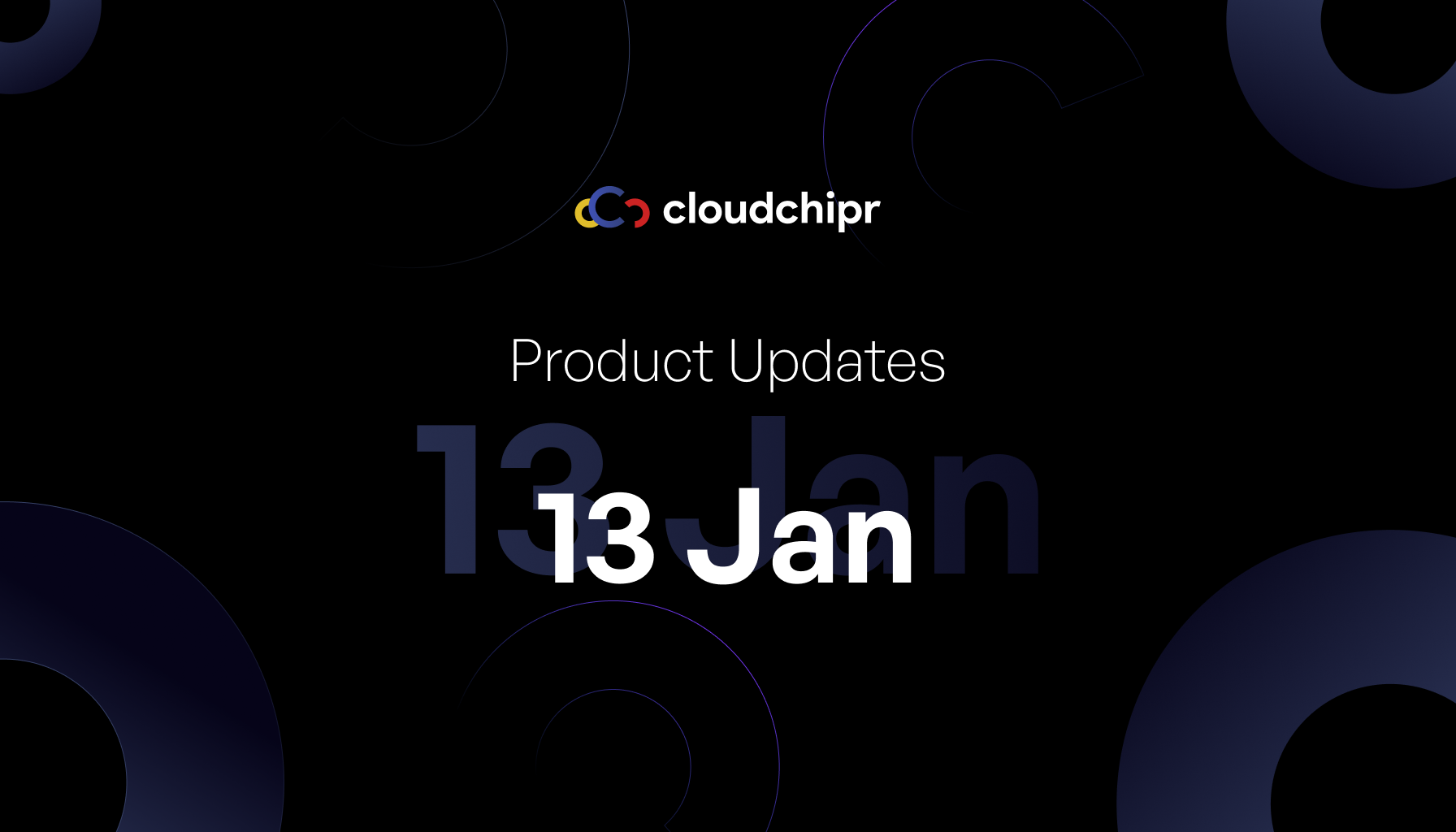
.png)